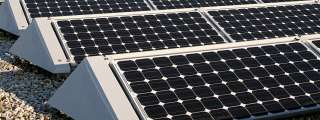!!! USE CLONE in order to create a new country site !!! Don't alter this page!
Professional planning with an approved concept
The most commonly used PV systems are rooftop systems. They are particularly prone to damage caused by direct and indirect lightning effects due to their exposed location.
Since the PV system is directly connected to the electrical installation of the building, lightning effects can have severe consequences:
- Damage to the building resulting from direct lightning effects or fire
- Injury of people inside the building
- Destruction of or damage to electronic devices caused by direct or indirect lightning effects
Comprehensive protection is therefore necessary and should be planned carefully.





/www.dehn-international.com/store/f/57069231/HDVORSCHAU/941400.jpg)
/www.dehn-international.com/store/f/59092497/HDVORSCHAU/952400.jpg)
/www.dehn-international.com/store/f/59023854/HDVORSCHAU/952565.jpg)
/www.dehn-international.com/store/f/59650717/HDVORSCHAU/900910.jpg)
/www.dehn-international.com/store/f/59092547/HDVORSCHAU/952409.jpg)
/www.dehn-international.com/store/f/59329955/HDVORSCHAU/540250.jpg)

/www.dehn-international.com/store/f/59640276/HDVORSCHAU/951405.jpg)
/www.dehn-international.com/store/f/58312729/HDVORSCHAU/920349.jpg)

/www.dehn-international.com/store/f/57096918/HDVORSCHAU/105910.jpg)
